[Making Gesso Panel]
Table of Contents
Date and Time:
2015. 10. 5, 2:00 PM
Location: Chandler 260Subject: Making gesso panel
- prepare rabbit skin glue solution and keep it constant at 40-60 degrees F
- add champagne chalk to the solution. keep it warm on the burner
- apply glue on both sides of the board to prevent warping
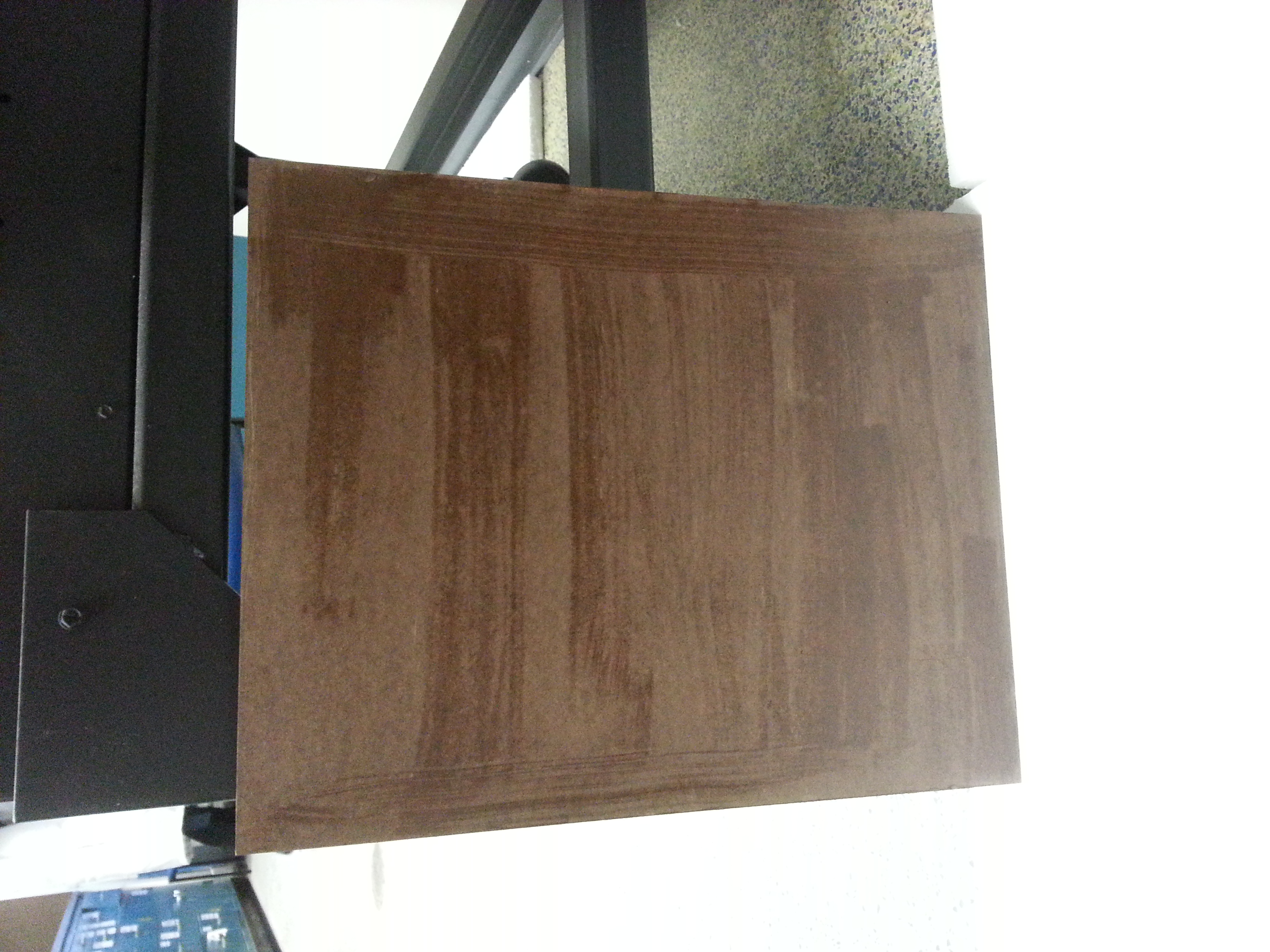
- when it is dry, sand it lightly
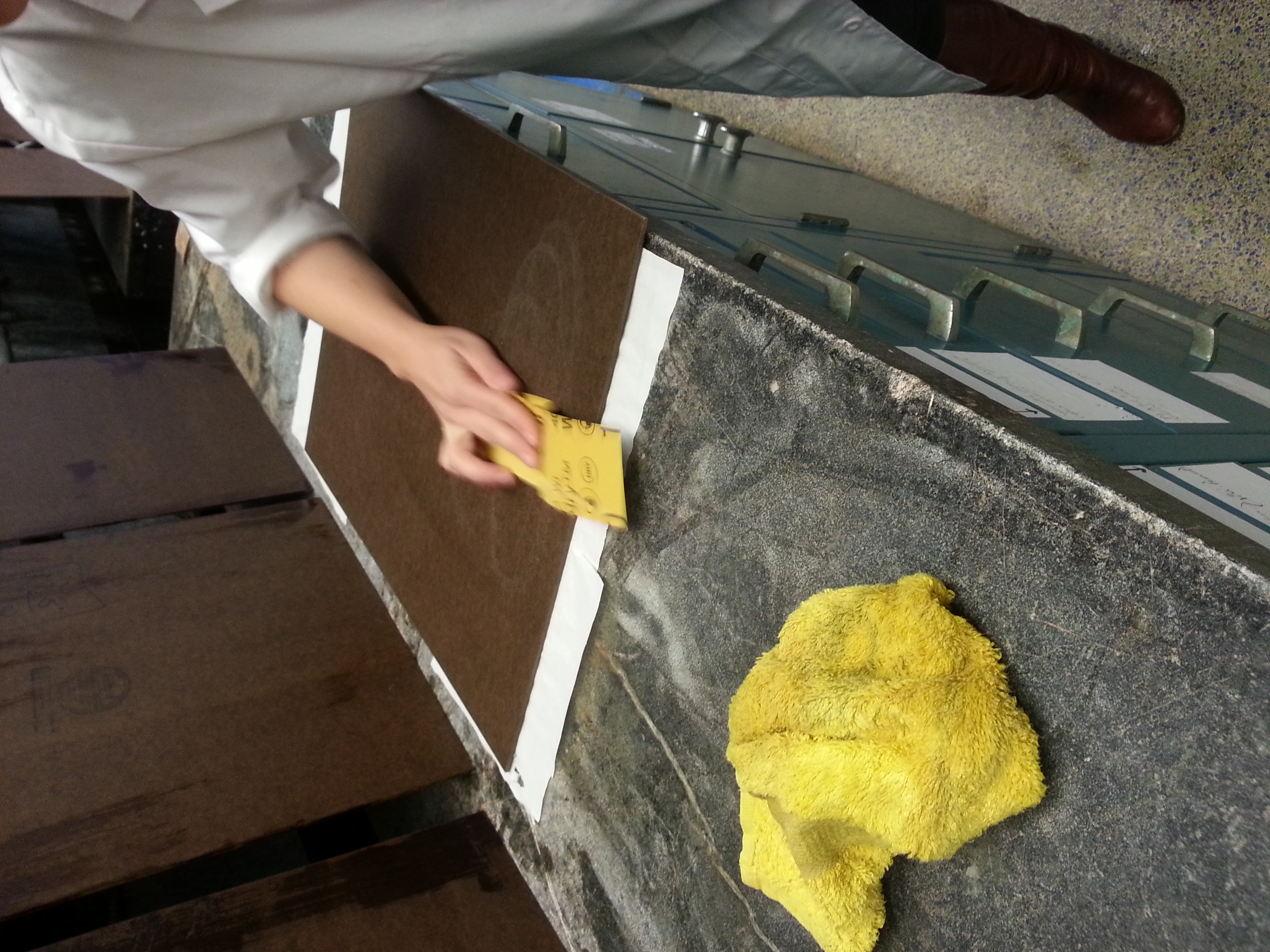
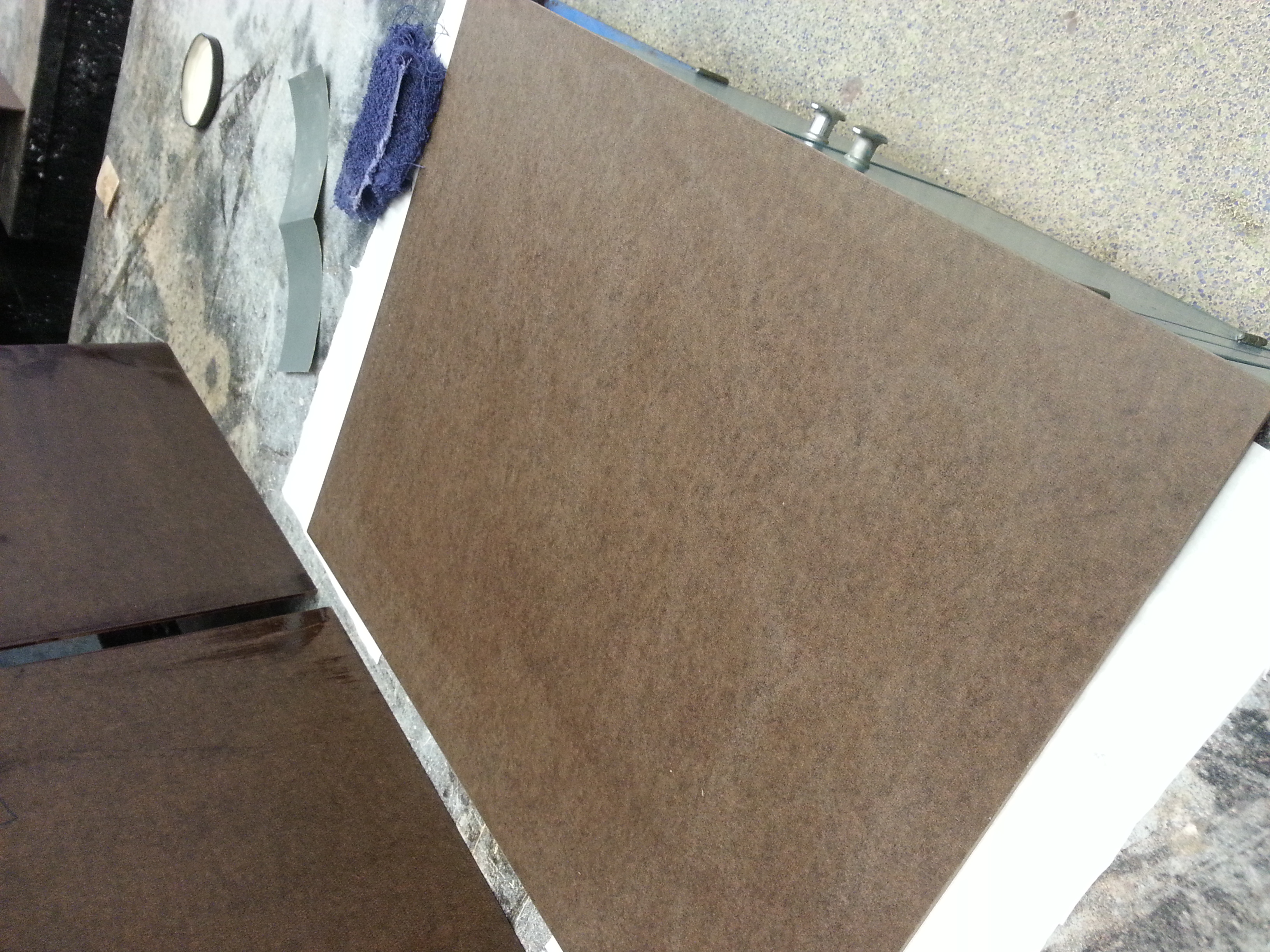
- Marjolijn showing us how to apply gesso layers--not to thick, evenly, no overlapping
- I watched her carefully and tried to imitate her movement
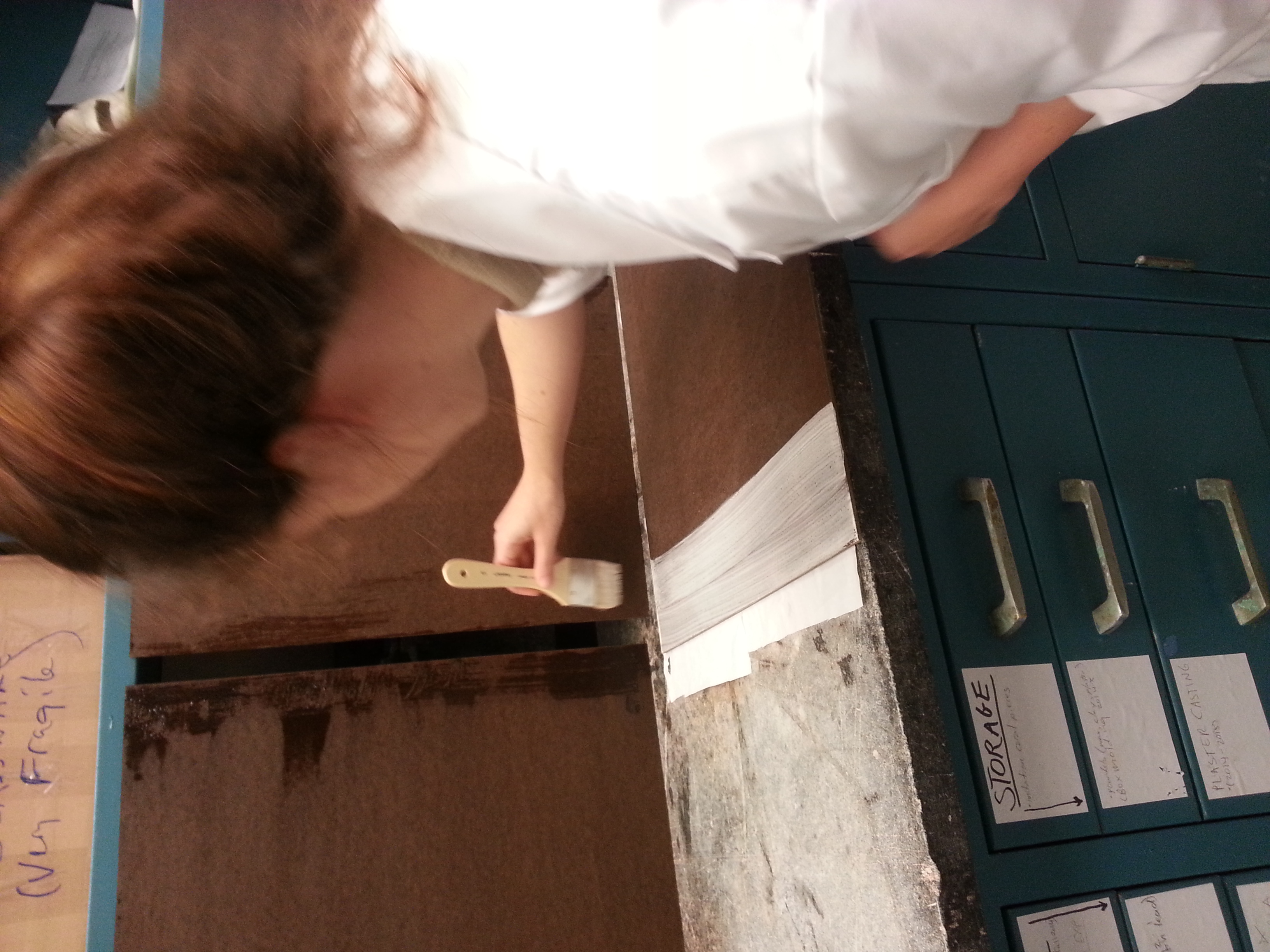
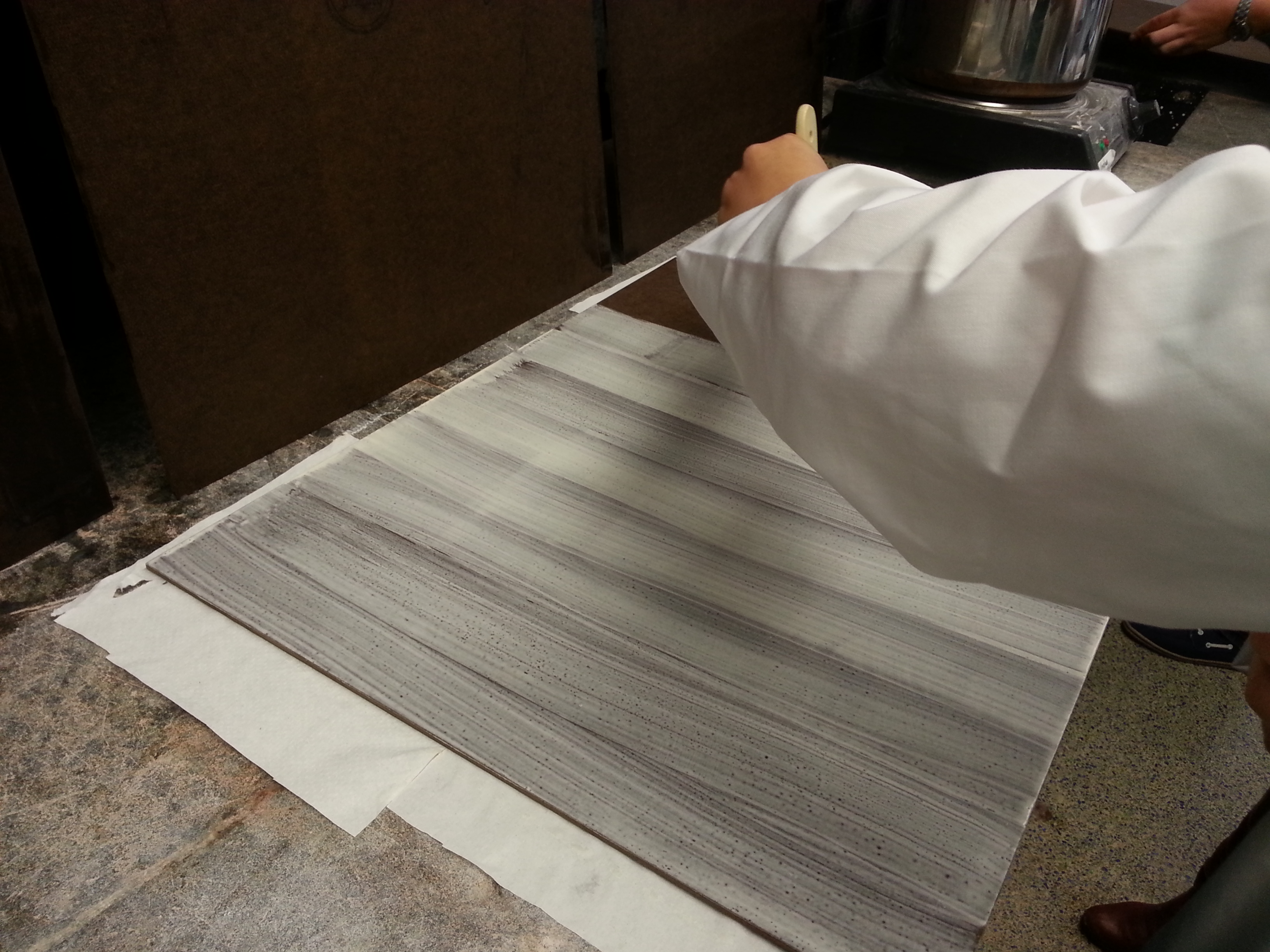
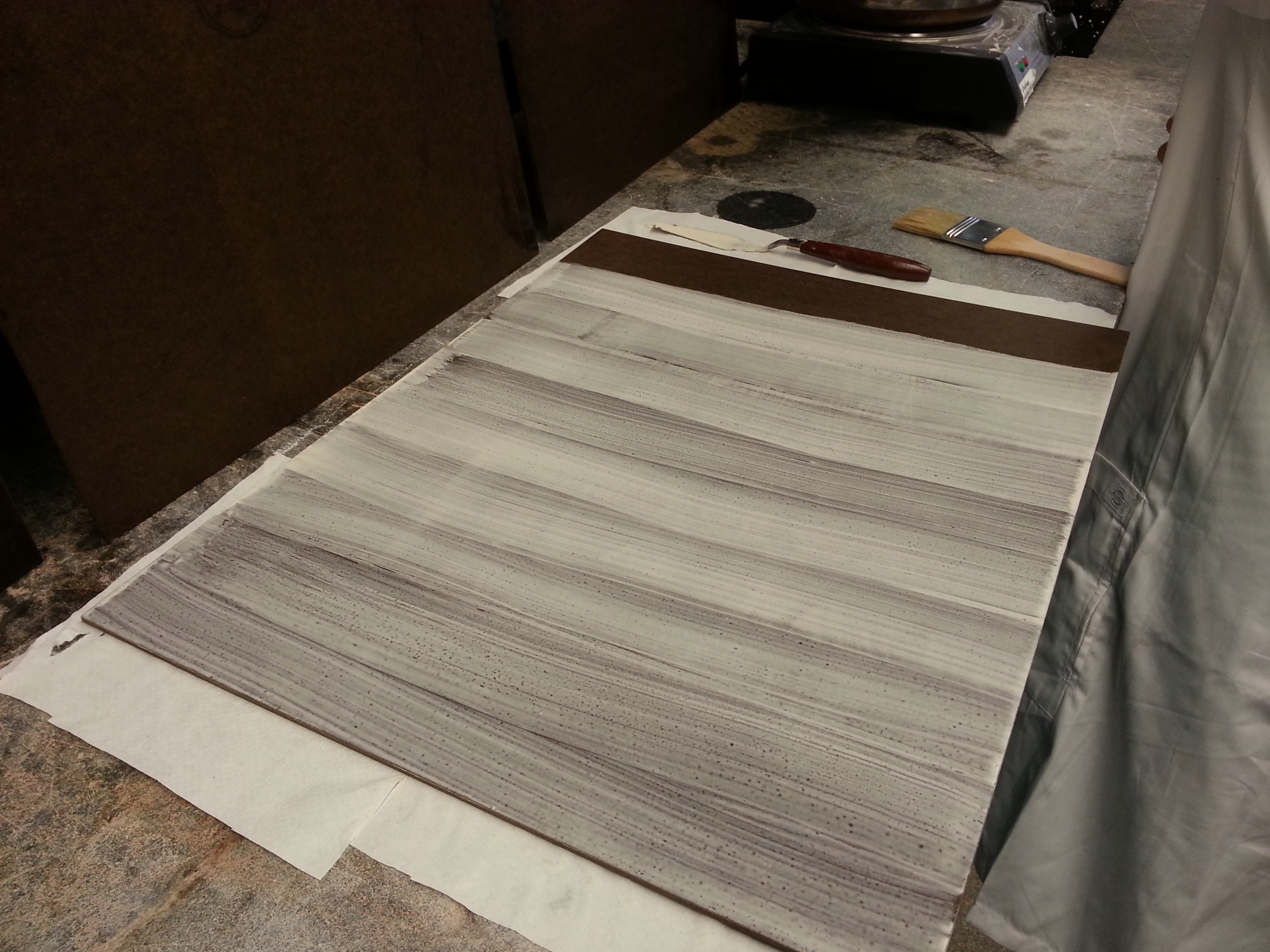
- and my first layer at 3:05 PM. a bit thicker than Marjolijn's
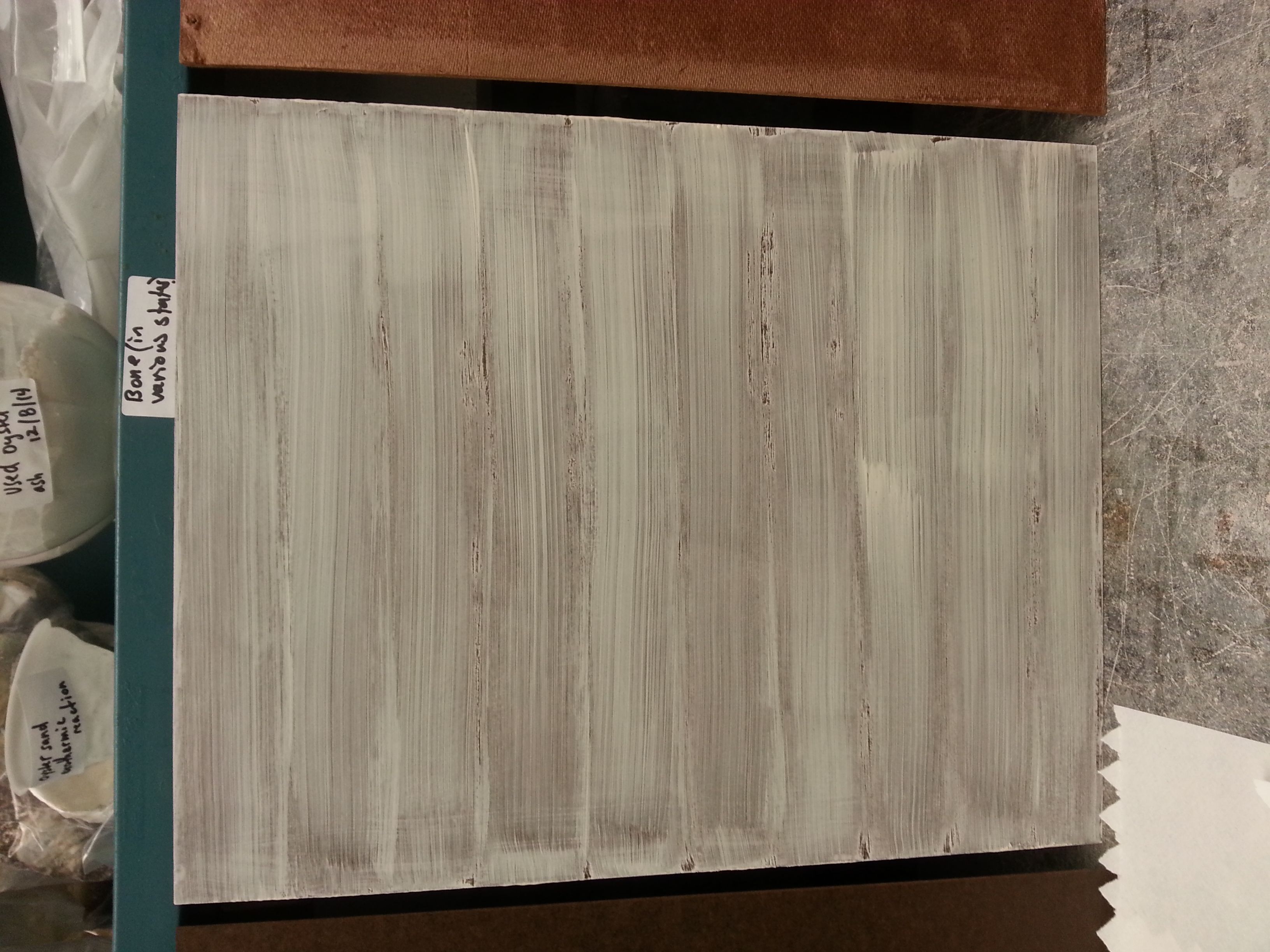

- second layer at 4:13 PM
- it took almost 45 min for the first layer to dry
- before applying every new layer, I sanded the dry gesso layers lightly and applied water on the other side to prevent warping
- need to alternate vertical and horizontal layers
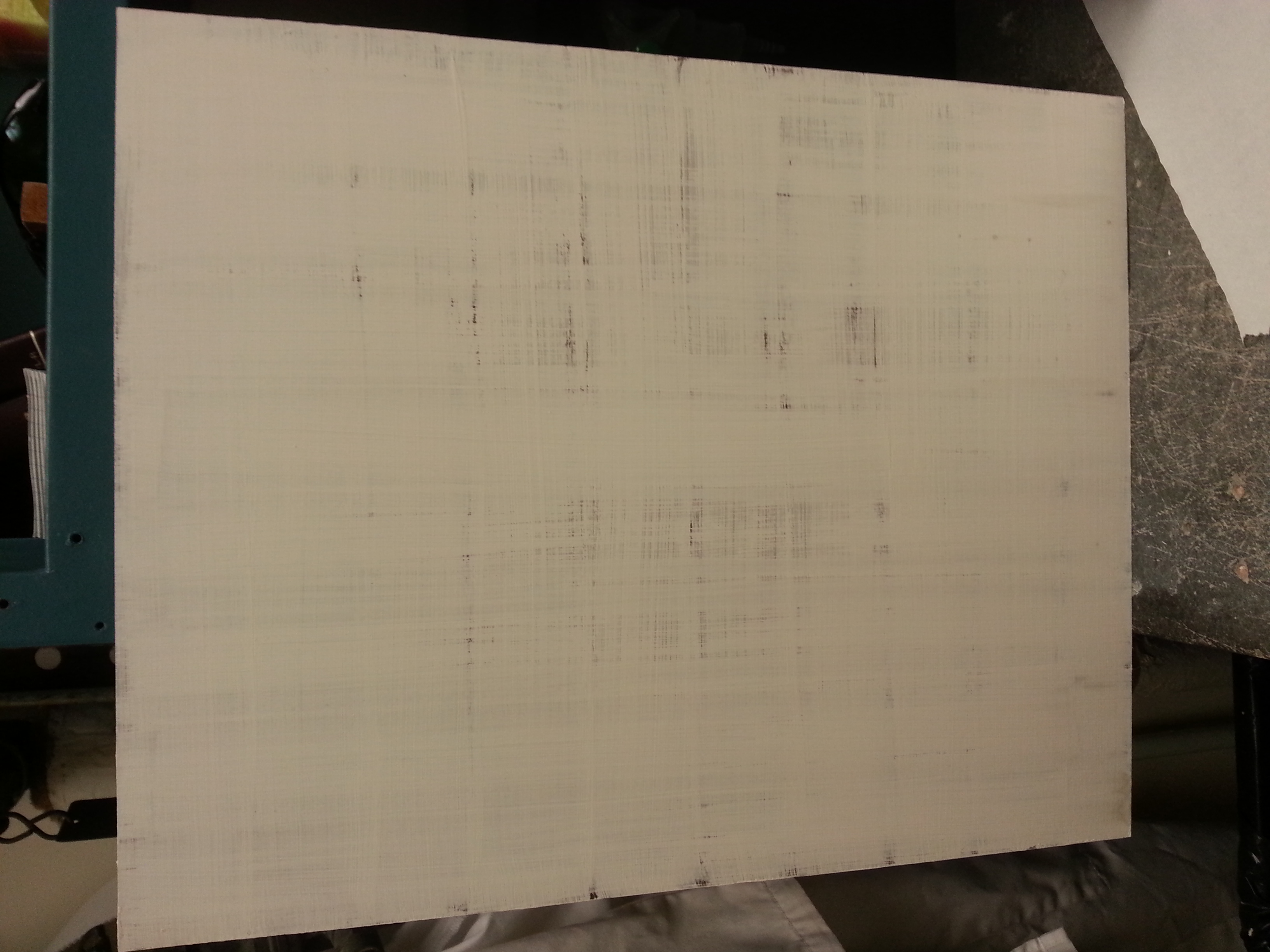
Name: Yuan Yi and Marjolijn Bol
Date and Time:
2015. 10. 6. 10:10 AM
Location: Chandler 260Subject: Applying Gesso Layers
- third layer at 10:03 AM
- I still see the brown color of the board beneath the gesso. a bit concerned about this.
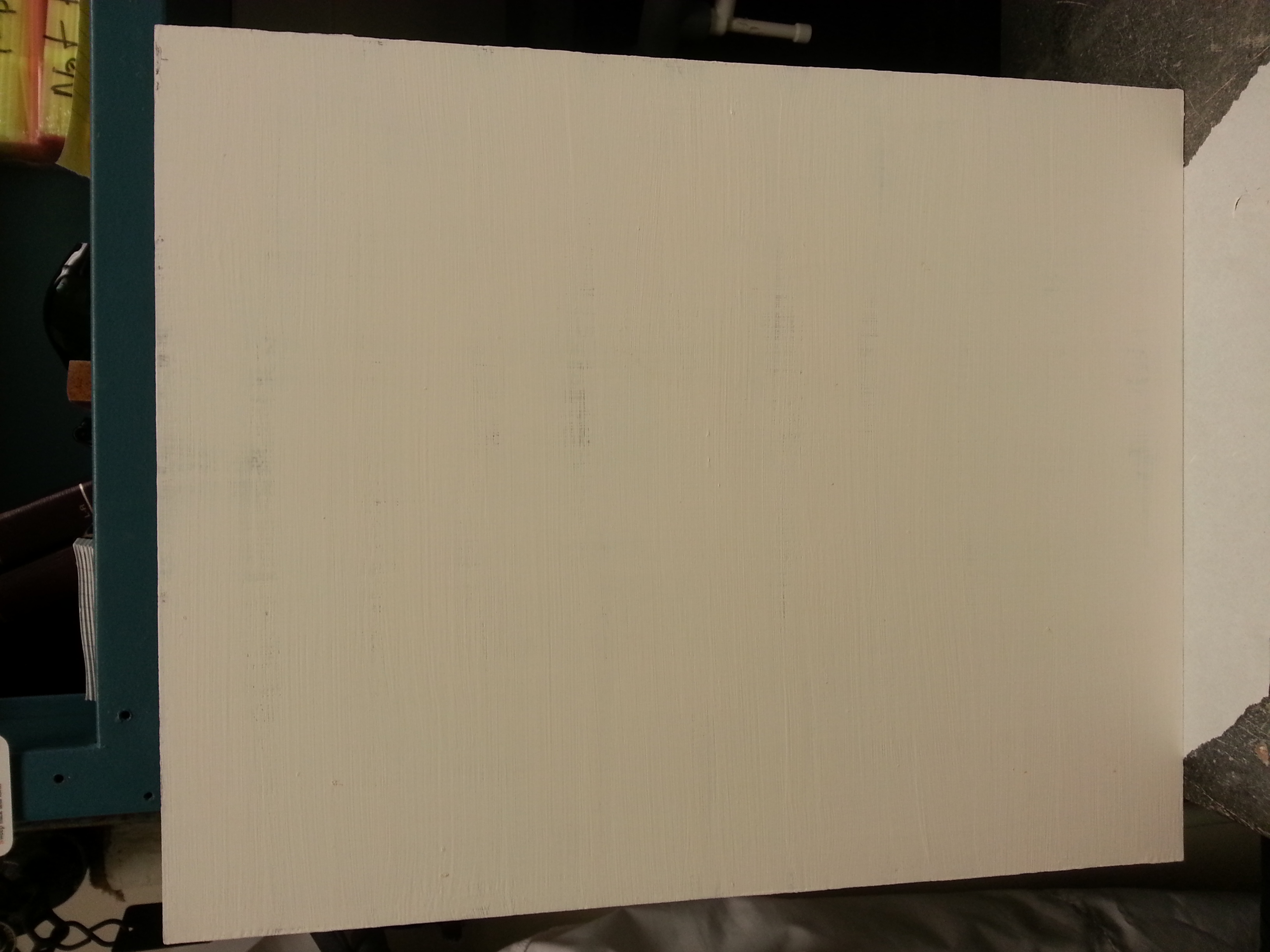
- fourth layer at 11:35 AM
- beginning with this layer, the ground color of the board is hardly seen
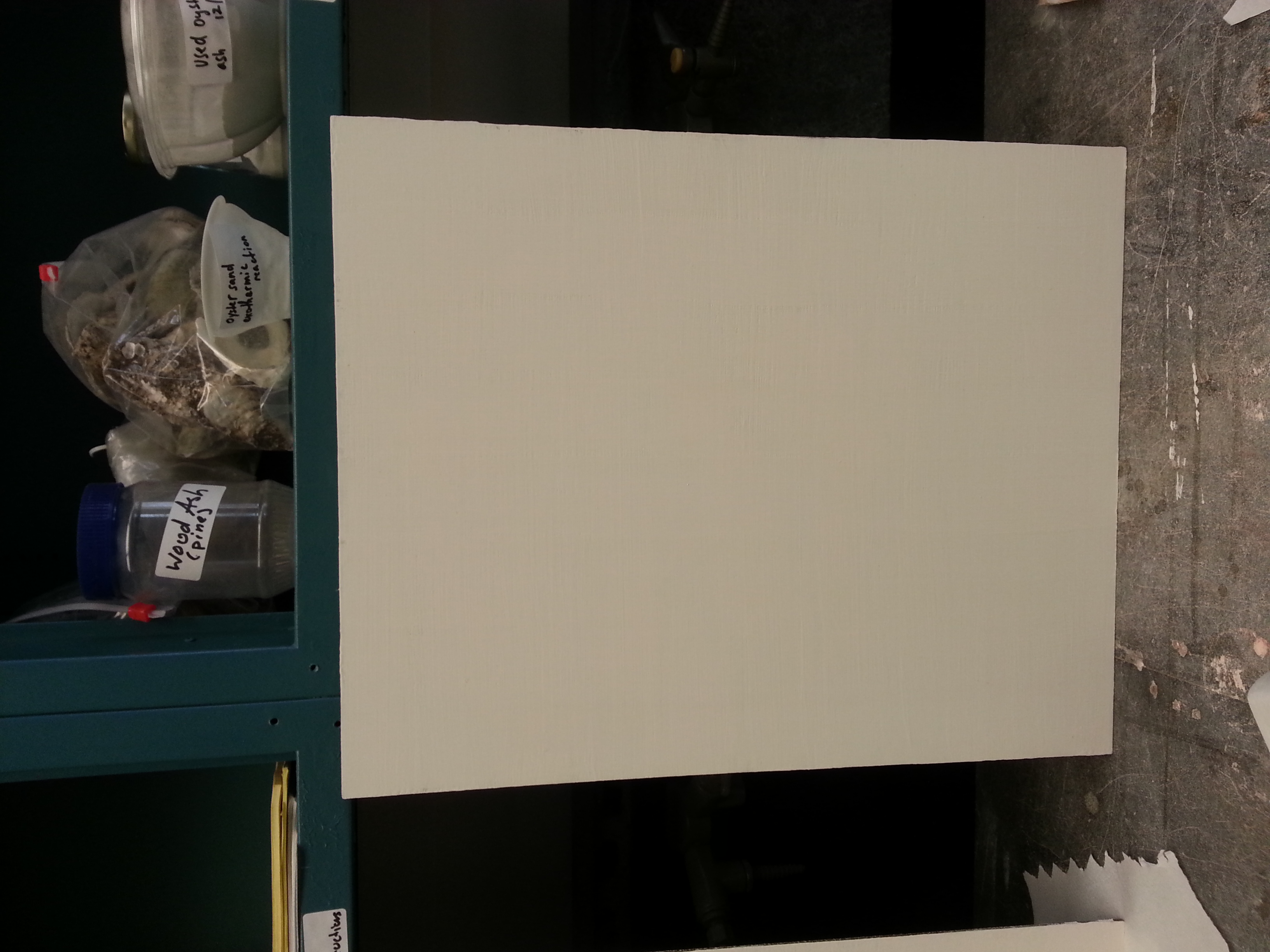
- fifth layer at 3:05 PM

- sixth layer 3: 45 PM
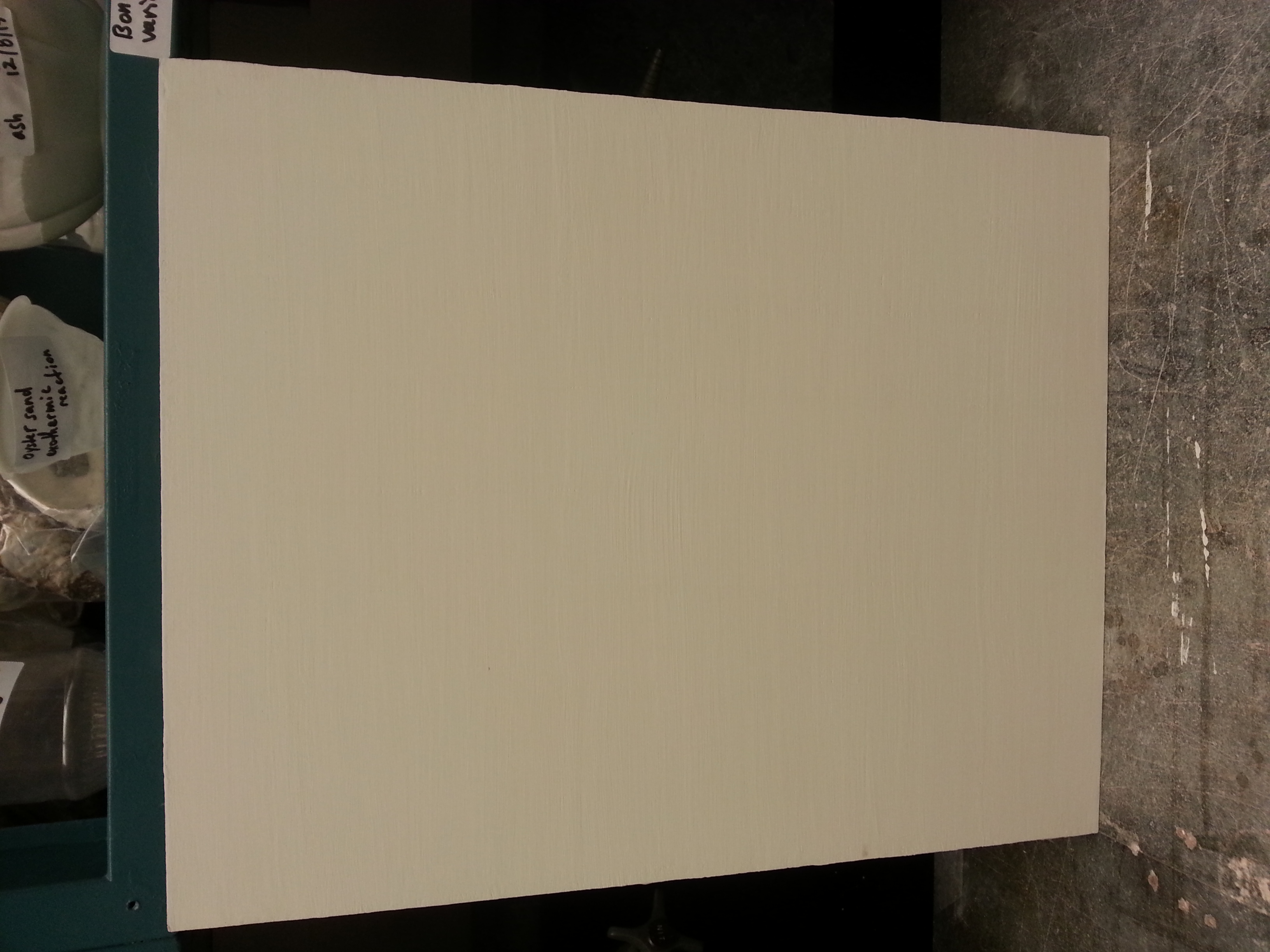
Name: Yuan Yi and Marjolijn Bol
Date and Time:
2015. 10.12. 10:10 AM
Location: Chandler 260Subject: Sanding gesso penal
- sanded the board for almost 2 hours. began with 150 grit sand paper and ended with 1000 grit.
- worked in the fume hood.
- learned that it is important to make each layer as thin as possible. otherwise a lot of sanding
- applied glue solution on the half of the board
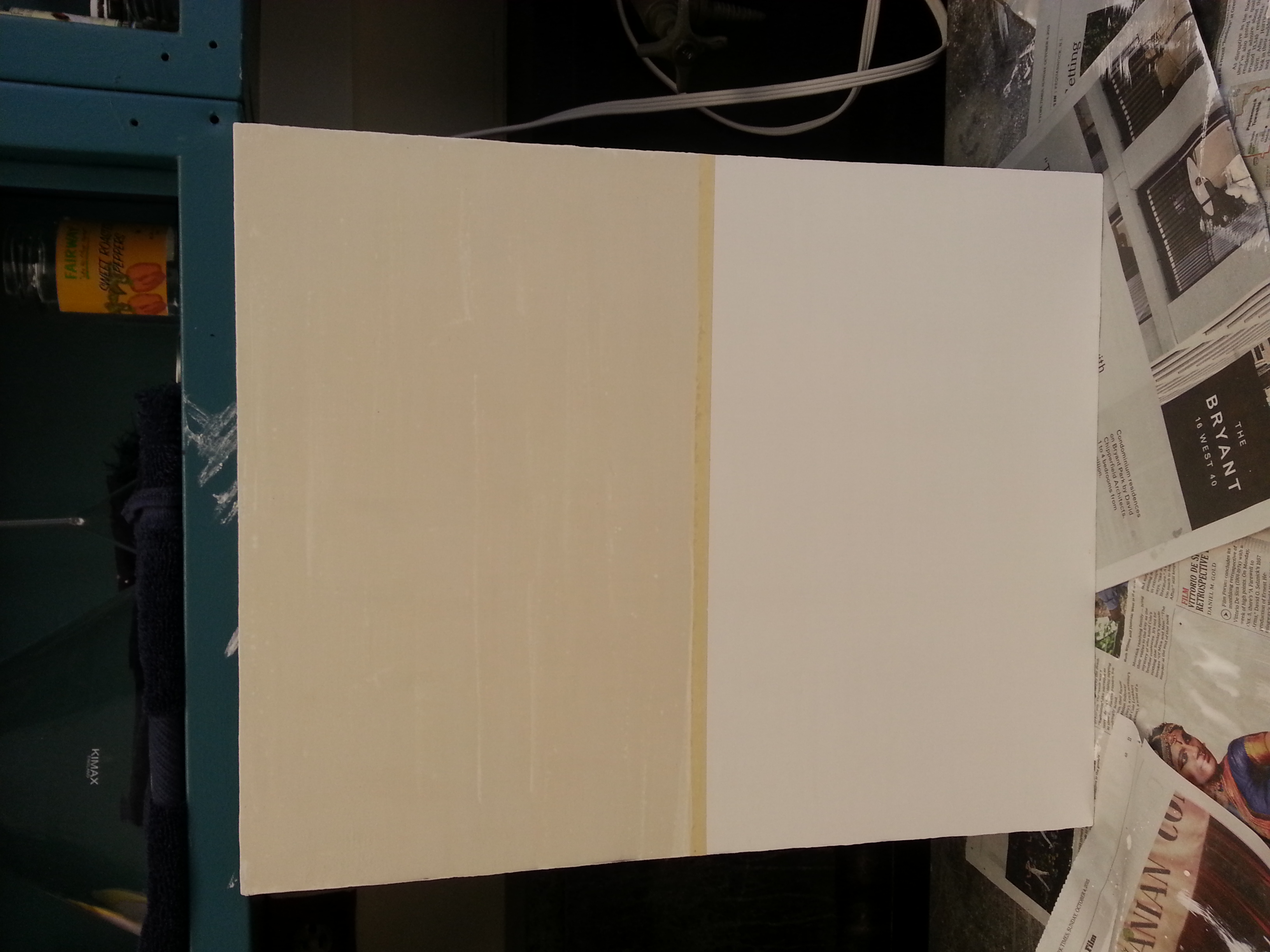
- made small squares with tape for testing various pigments
[Gilding]
Name: Yuan Yi and Marjolijn Bol
Date and Time:
2015. 10. 12. 2:00 PM
Location: Chandler 260Subject: Applying Gesso Layers
- applied first layer of red bole
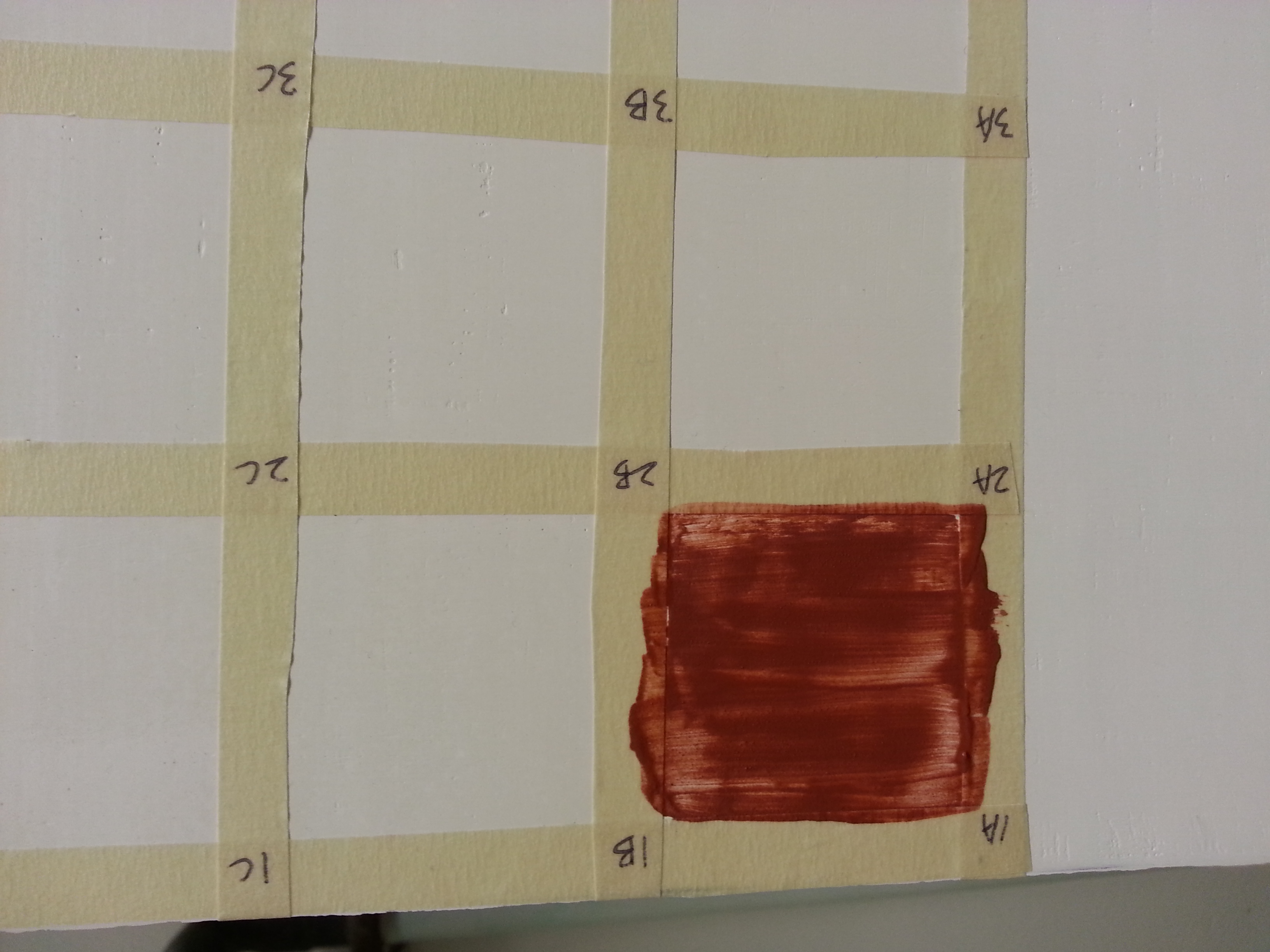
- applied second layer
- the density of the pigment was quite high. Marjolijn allowed me to sand it without adding further layers
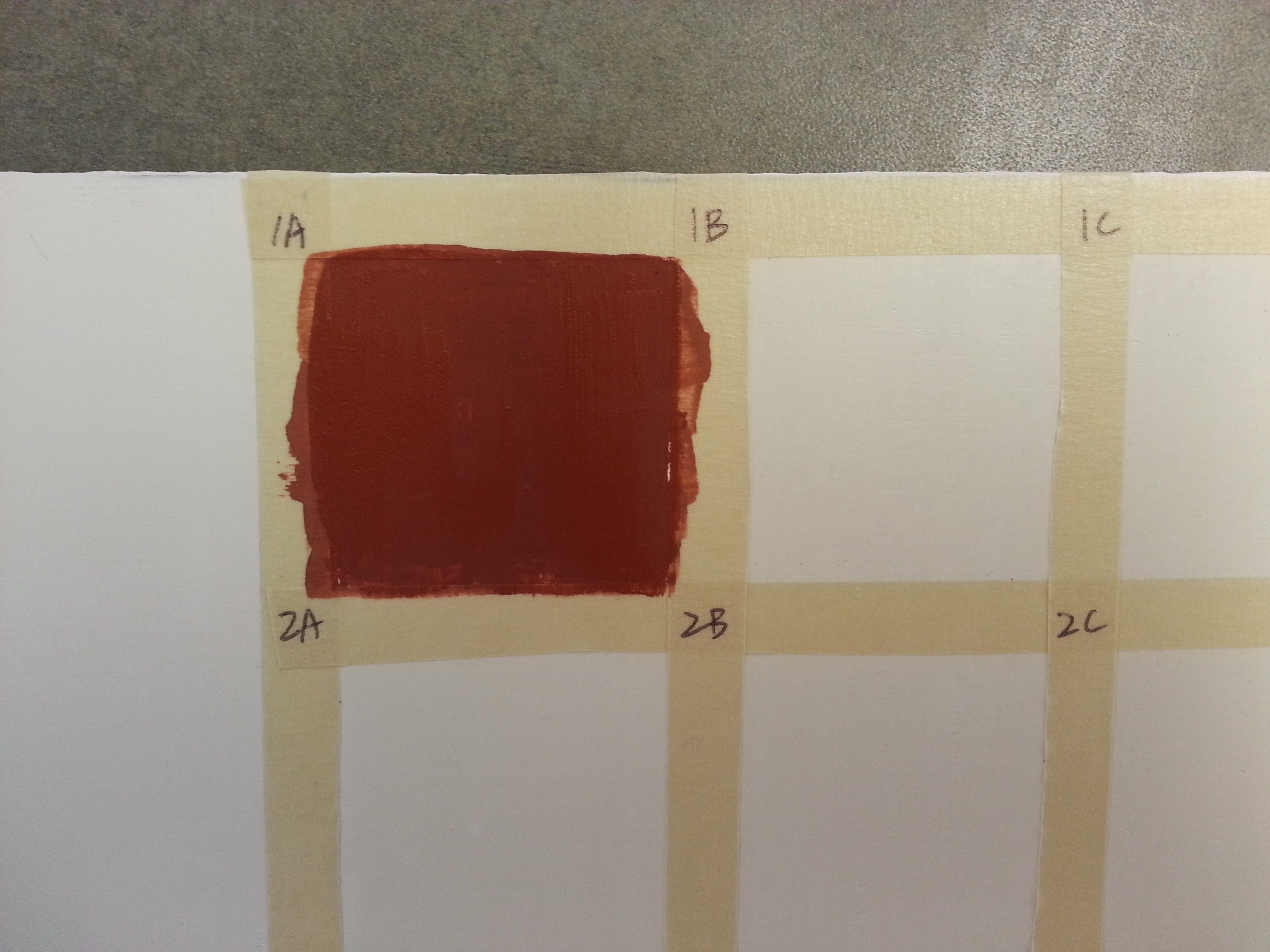
- sanded it with1000 grit sand paper for 20 min.
- can see the change of color (from left to right below)
- when most of the surface turns into red-brown, it is ready to proceed with burnishing
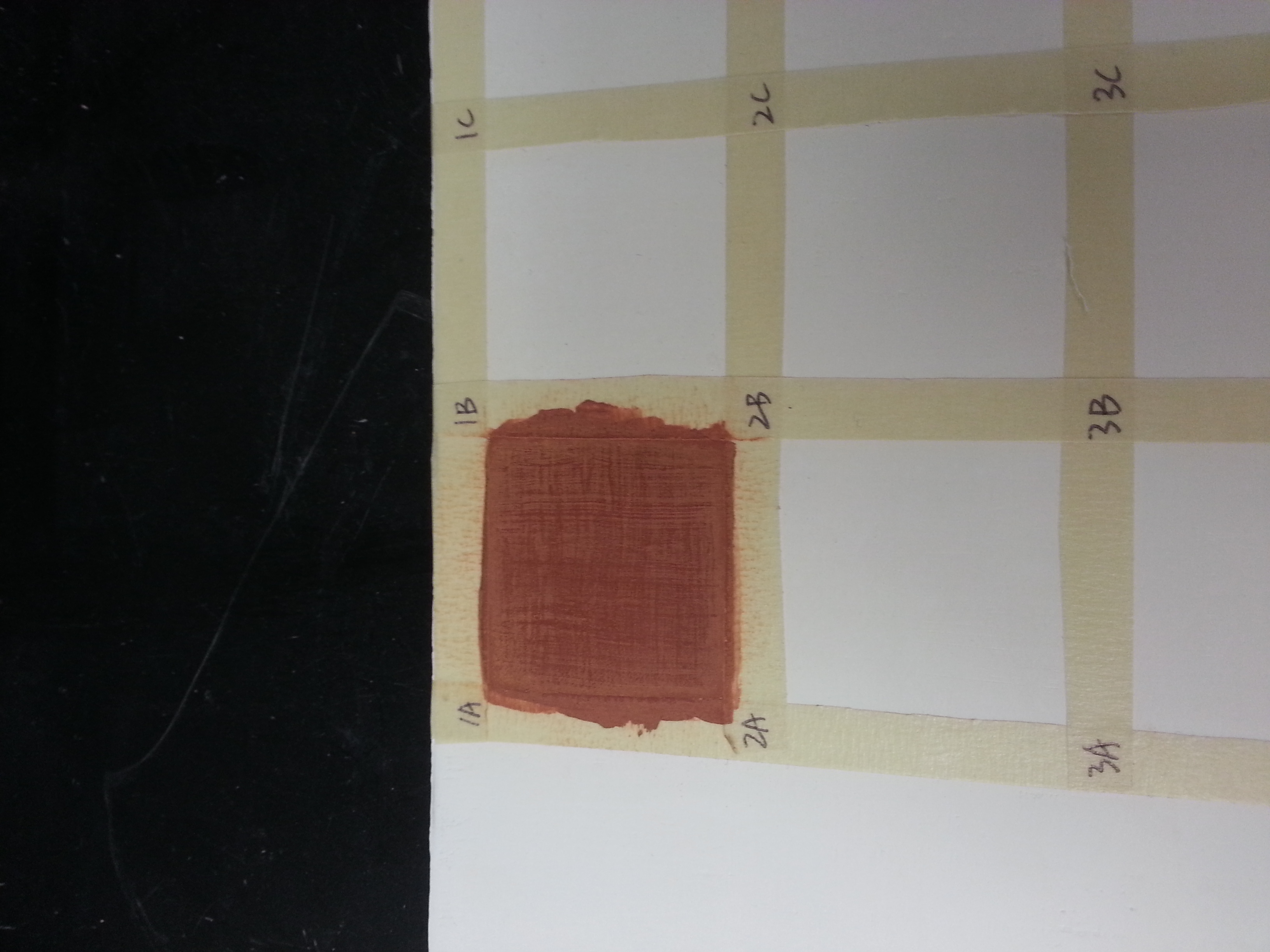
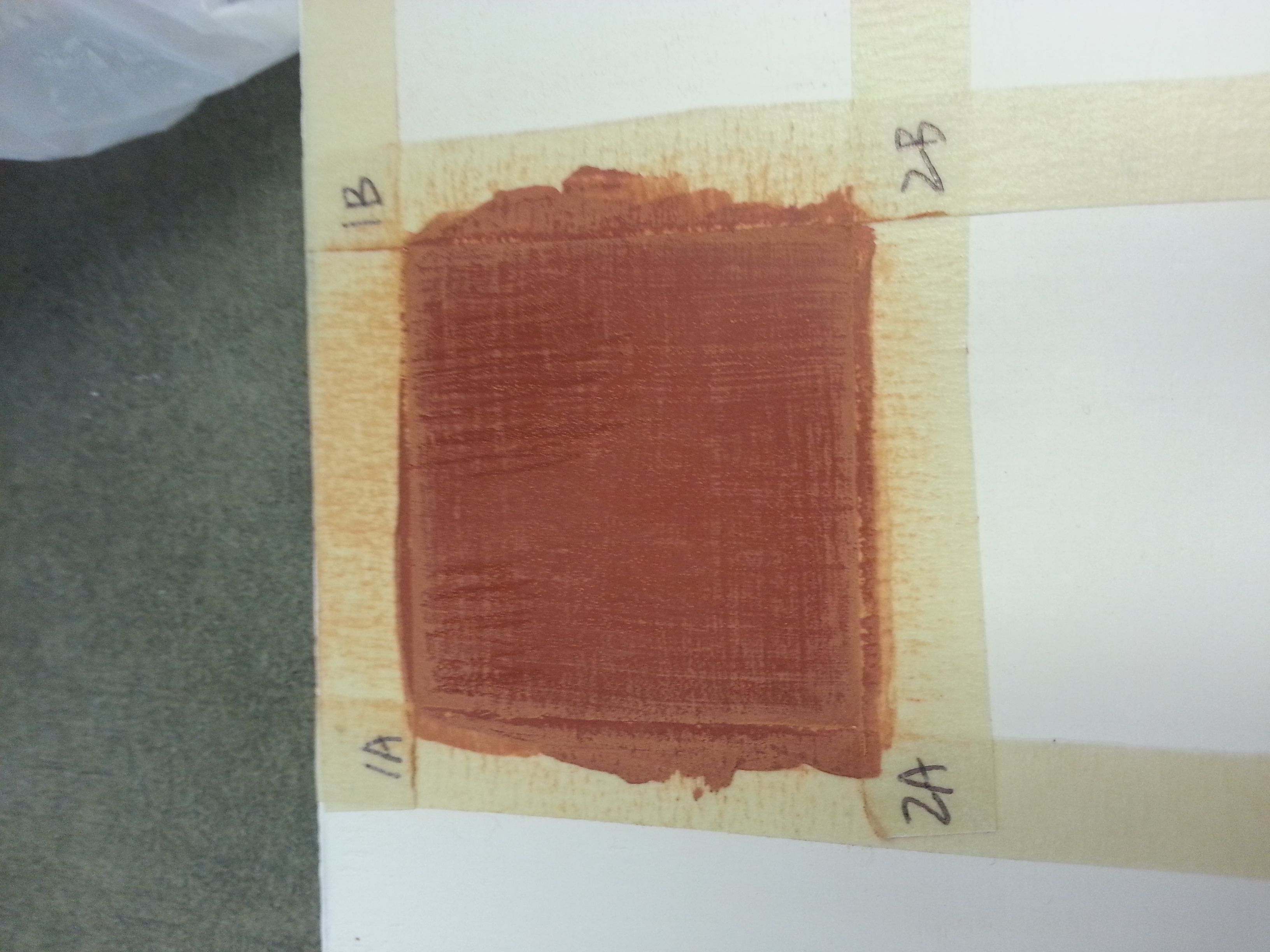
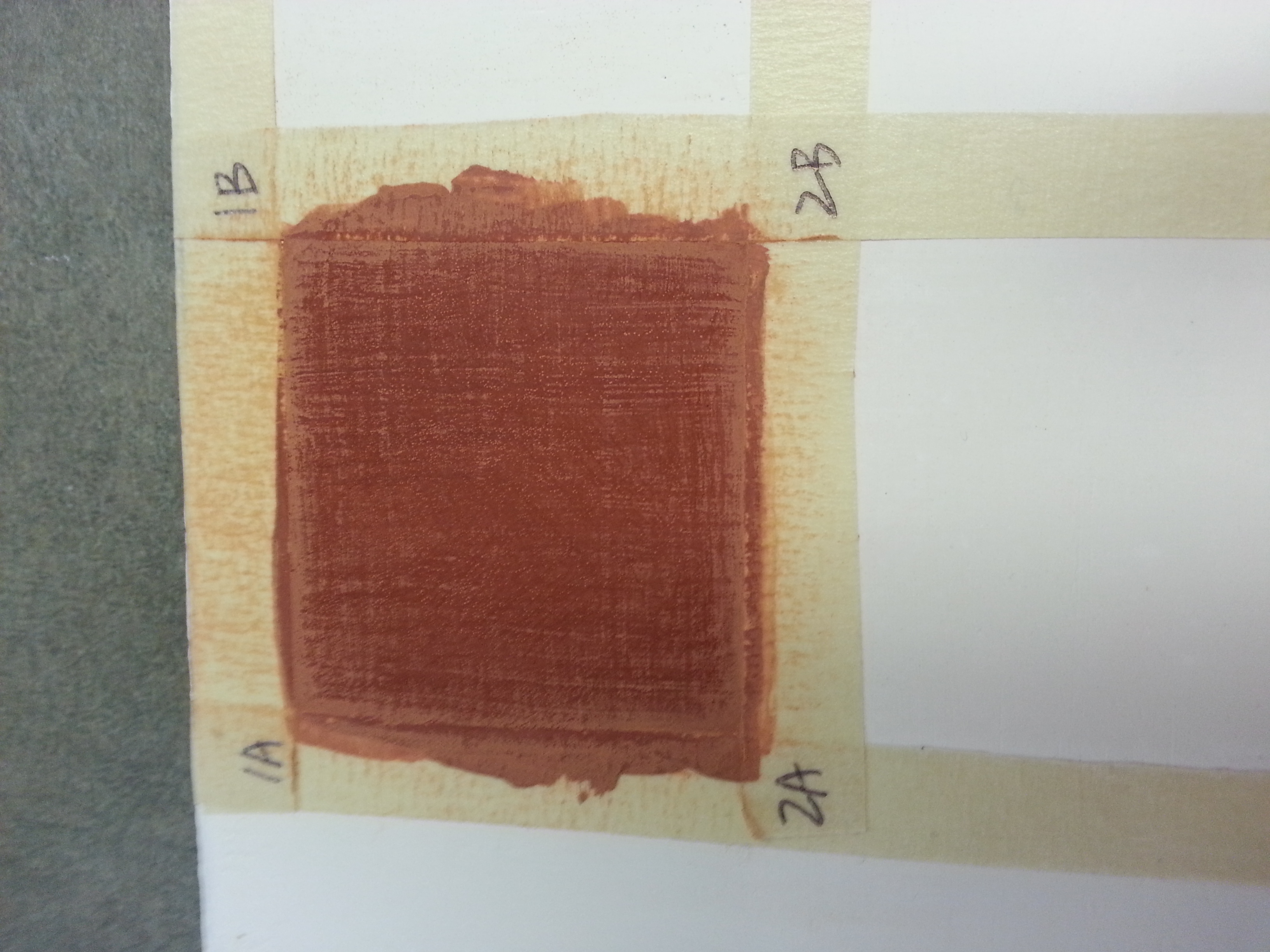
- burnished the surface with agate burnisher carefully but with sufficient pressure
- I was extremely careful because I knew that the burnisher was very expensive but Marjolijn told me I should press the surface a bit more when burnishing
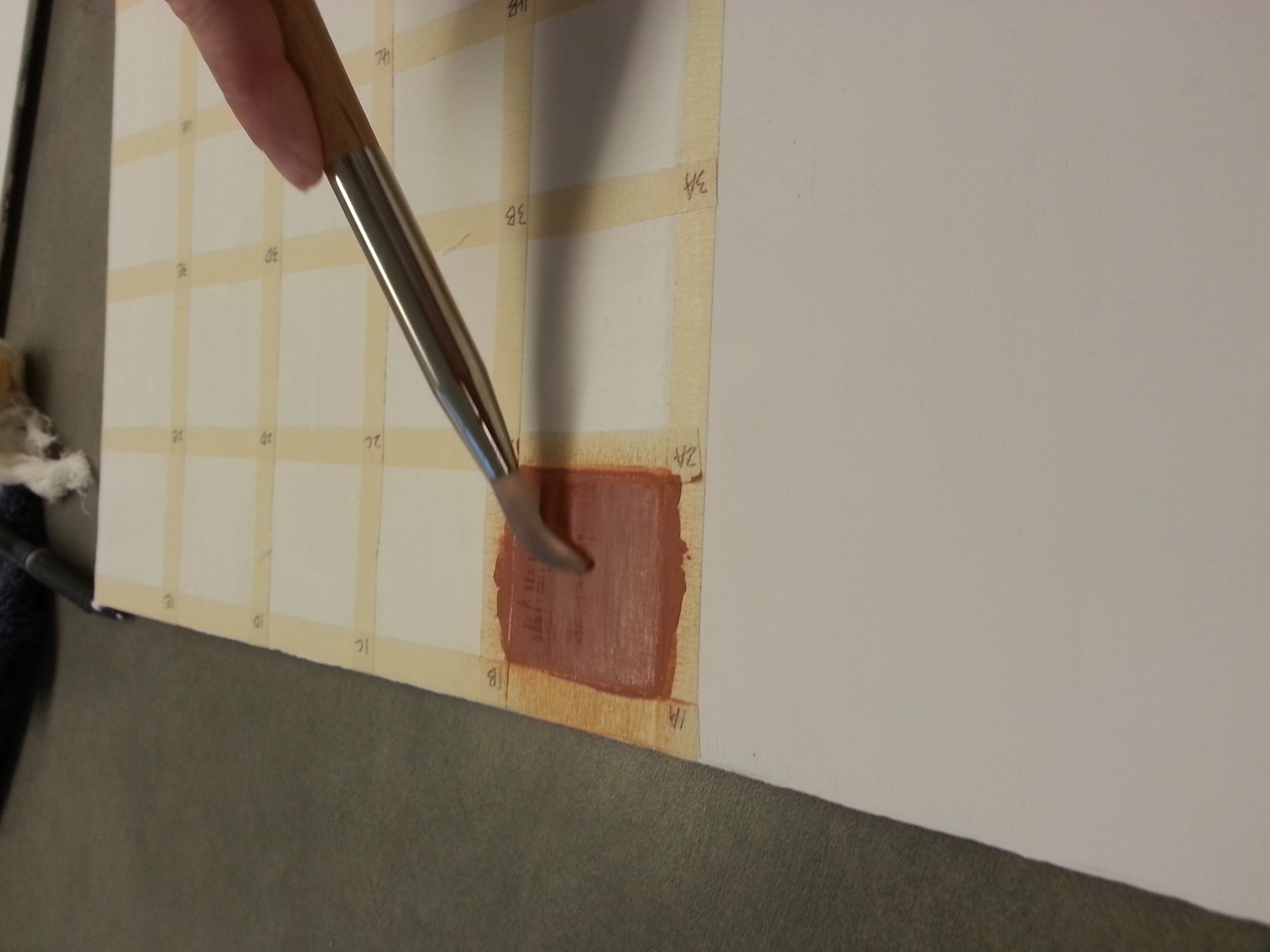
- prepare gold leaf
- put it on pillow and cut to size with knife
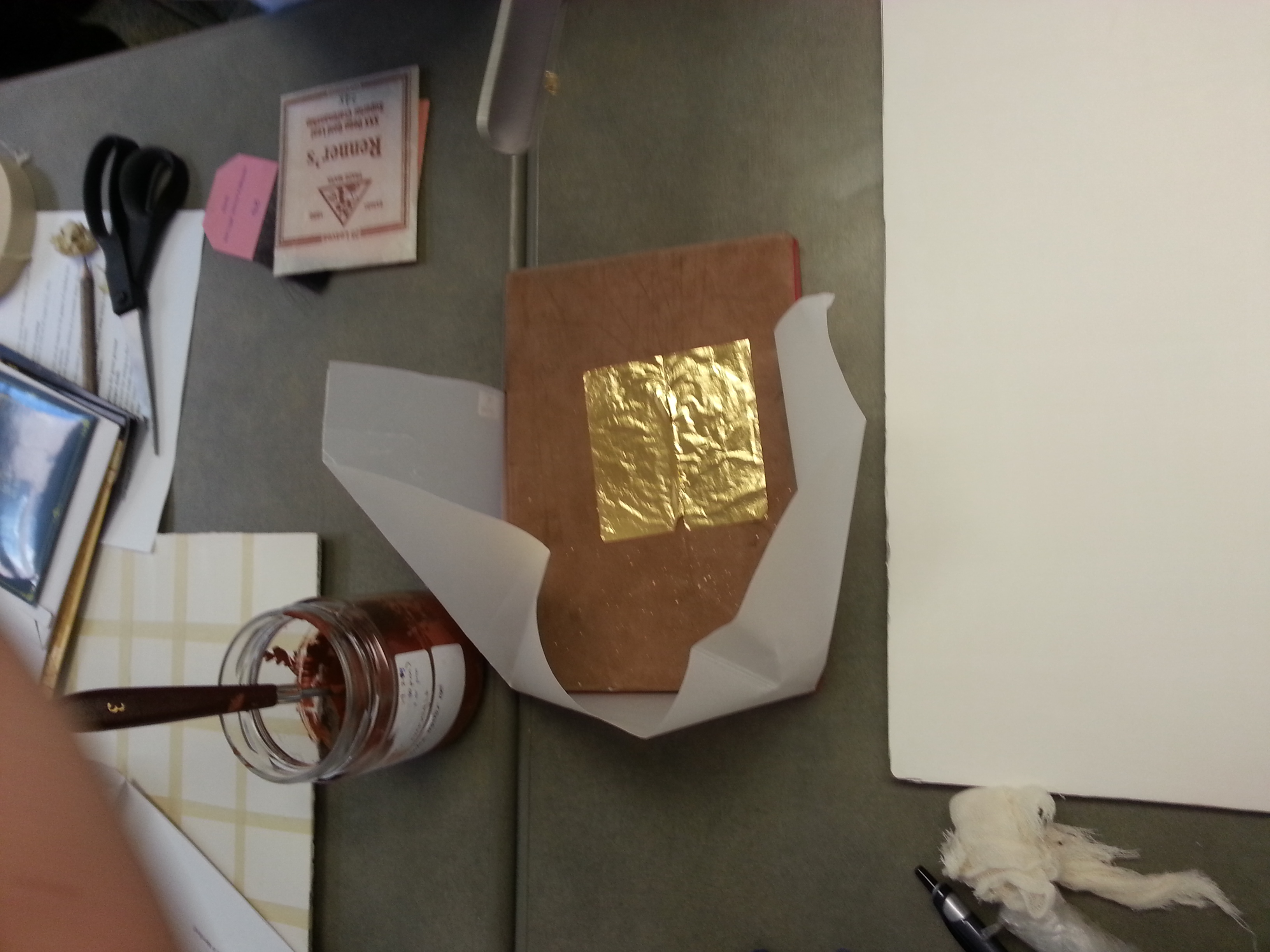
- gold leaf is lifted with brush. before using the brush, it is better to add some oil by brushing wrist, forehead, or any oily bodily part.
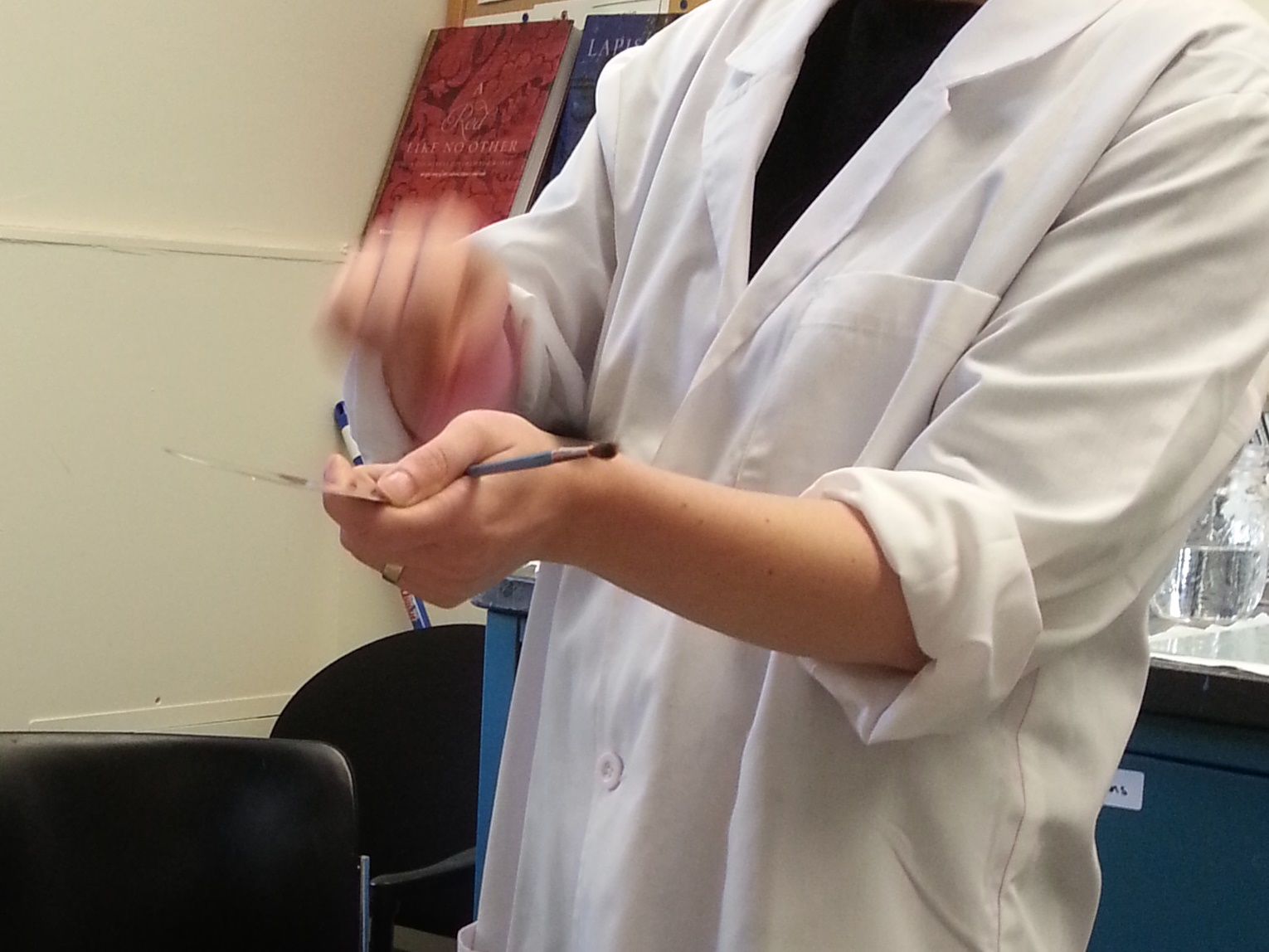
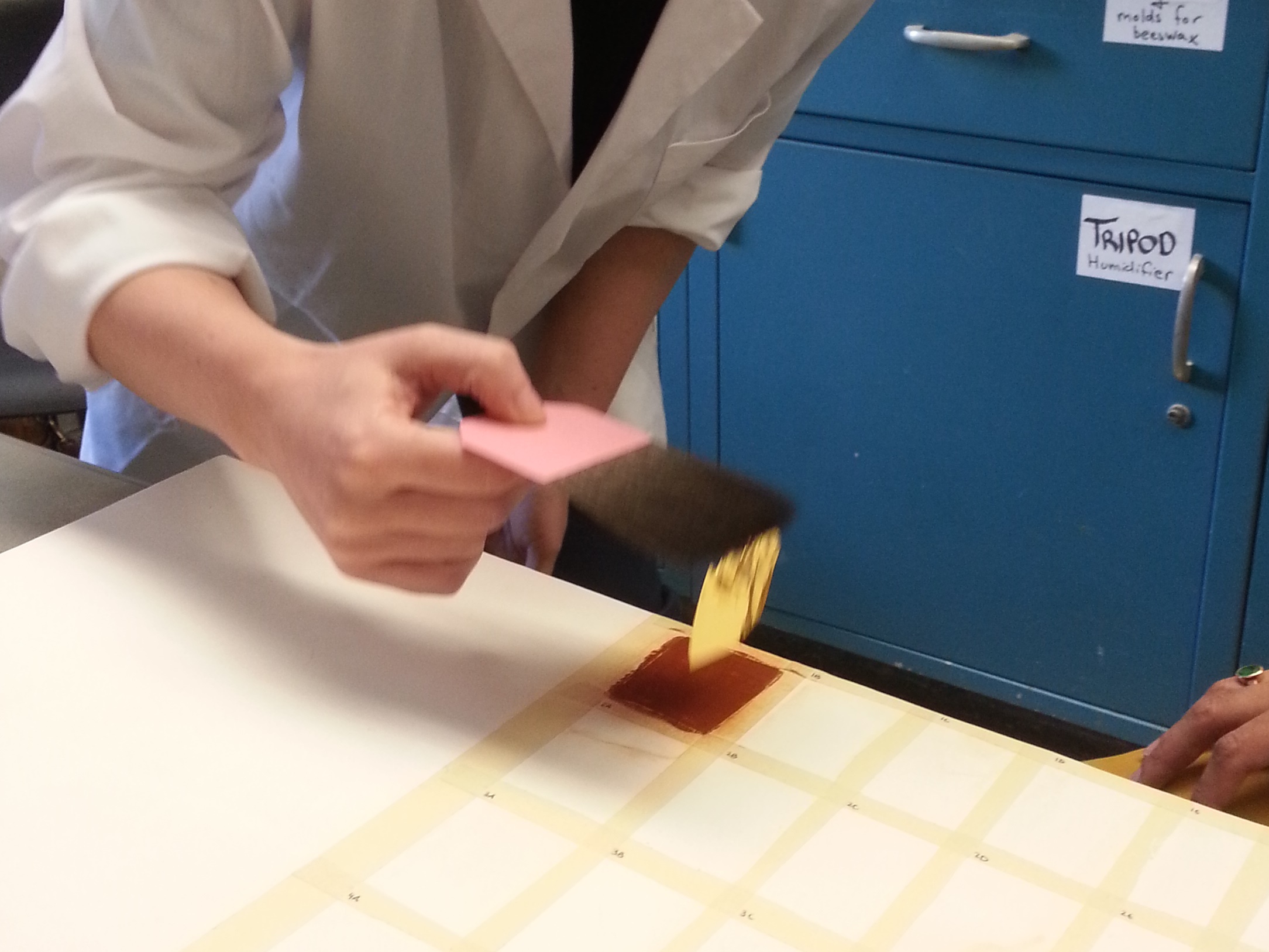
- the landing was not quite successful.
- the gold leaf is hard too handle. vulnerable to even a light wind generated by the fume hood.

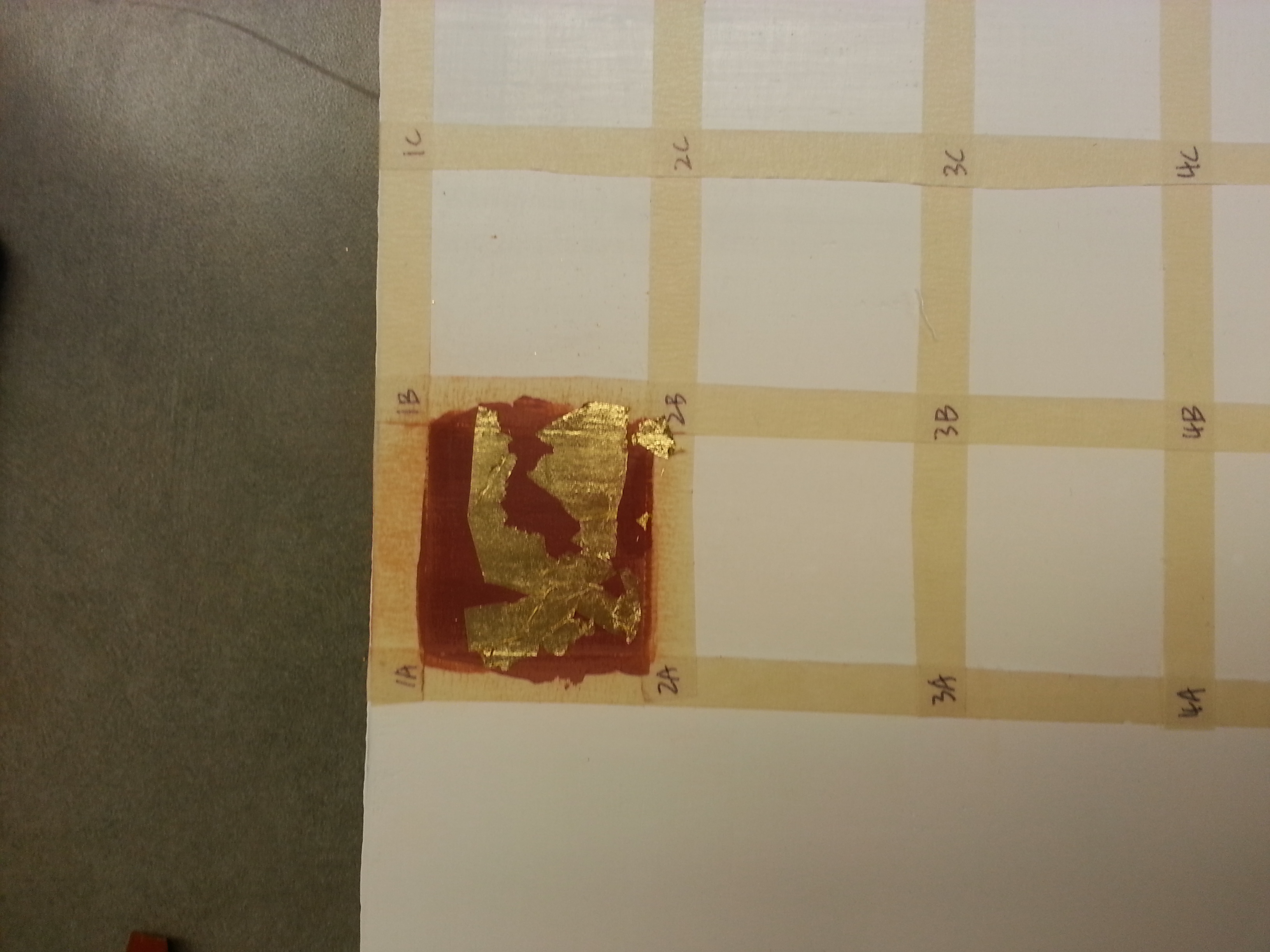
- Marjolijn helped to fill in the holes and cracks with small gold leaf pieces
ASPECTS TO KEEP IN MIND WHEN MAKING FIELD NOTES
- note time
- note (changing) conditions in the room
- note temperature of ingredients to be processed (e.g. cold from fridge, room temperature etc.)
- document materials, equipment, and processes in writing and with photographs
- notes on ingredients and equipment (where did you get them? issues of authenticity)
- note precisely the scales and temperatures you used (please indicate how you interpreted imprecise recipe instruction)
- see also our informal template for recipe reconstructions